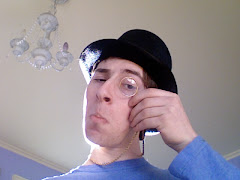What is food? What is a lemon soufflé? Is it nothing but nourishment? Something that is enjoyed, but then forgotten? No. One never forgets really good food. It is like a painting that is so amazing that its image is permanently burned into our mind. Food is art, just like paintings, although it definitely doesn’t last as long. But then, that’s why we have wine and cheese.
In the book, Ruth Reichl has no idea that food can be so good. She is brought up by a culinary horror of a mom, and the most important property of food at the time is edibility. Her mom, who is crazy in many other ways, decides to send her to a French Canadian boarding school without her knowing any French. She makes a friend there (by sharing cream puffs) and is invited to her house for the weekend. She finds that they are extremely wealthy and eat masterpieces every night. Ruth, being a natural gourmand, loves everything and gets invited back every weekend. On her friend’s father’s birthday, they decide to make him a lemon soufflé. It is quite precise, but her friend had practiced hard and they made a light, fluffy, and creamy soufflé. The father loved it and Ruth had then gone on to be a great chef, then literary critic.
I decide to make my own lemon soufflé with my mother, so we get our ingredients and go to work. There are six eggs that need to be separated perfectly, so I watch as my mom, a soufflé veteran, skillfully cracks the eggs, then pours the yolk into the other half shell over and over again until all of the whites have spilled out. To be so precise and graceful while doing such a fragile task is a skill all cooks strive for. I butter the soufflé pan in a somewhat clumsy and out-of-order way. My mom takes a large hunk of butter and puts it in the pan. It always surprises me how something so light could have so much butter. Now the flour is added and she stirs in the milk. All of this time I have been doing the small tasks like measuring, but I guess that’s just 90% of cooking. We beat the egg whites until there are “soft peaks,” but I’d describe it as waves in a static picture, rising over the rest of the water to inevitably crush all under it. A monstrous egg white mixture indeed. We add the lemon juice, sugar, and vanilla to the pan. I usually drink the leftover lemon juice. It gives me a tingly feeling. Kind of like a shiver down your spine, but in your mouth. Alas, there was no extra lemon juice, so I must wait until the next lemon-based dish. I use a cheese grater to take off the rind of a lemon. When I am done I see lemon as half-nude. It has no more outer protection to keep it warm, but it must go back into the fridge. This is the sour life of a lemon. I add the lemon rind to the pan after the egg yolks are put in. Then the static wave of egg whites comes out of its frozen state and envelops the rest of the concoction. We evenly spread the soon-to-be soufflé in the pan and put it in the oven. Twenty-five minutes later it has browned, but has not risen as high as we expected. It looks delicious, but just not quite how we had hoped. Hours later it has shrunk to half its size and we are a bit disappointed. We take a taste. All disappointment is gone; we congratulate ourselves for a job well done. It has a moist, tender taste. Lemony, but not in a sour way. The butter I had mentioned is doing its job very well. It is so creamy and smooth. It is like a cross between lemon meringue pie and sponge cake. Two very good foods by themselves, and a tremendous food when combined. We all have seconds and are forced to stop, for we have to save some for a teacher. Mission accomplished.
Although Ruth Reichl and I had very different experiences with this one dish, we can both say that they were enormous successes. I will remember this dish for quite a while, and I will be happy to say that I was part of it.
Subscribe to:
Post Comments (Atom)


No comments:
Post a Comment